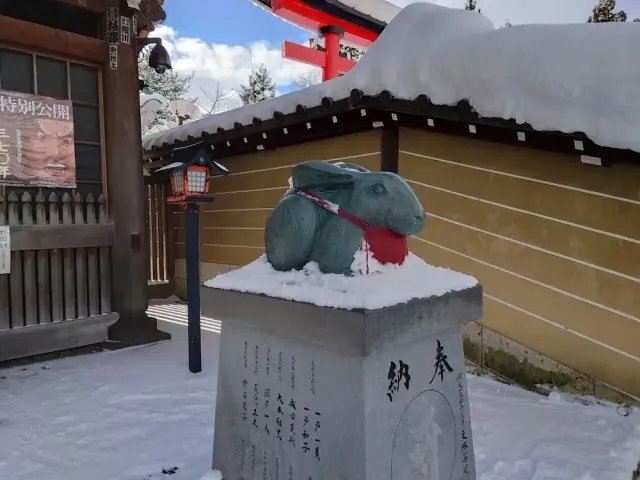https://www.dekitabi.com/itinerary/aomori-day-trip-horisaki
Nestled in the picturesque Aomori Prefecture, Hirosaki is a city renowned for its rich historical and cultural heritage. Visitors to this charming locale can explore a variety of sites that showcase its storied past and natural beauty. Among the must-see attractions are Saishoin Temple, Aomori Bank Memorial Hall, the Former Hirosaki City Library, Fujita Memorial Garden, and the iconic Hirosaki Castle. This guide will take you on a journey through these fascinating destinations.
Saishoin Temple: A Tranquil Retreat

https://www.dekitabi.com/attraction/saishoin-temple-aomori
Saishoin Temple, a serene Buddhist temple located in Hirosaki, offers a peaceful escape from the hustle and bustle of everyday life. Established in the 17th century during the Edo period, Saishoin is known for its beautiful architecture and historical significance. The temple’s traditional wooden structures and lush gardens create a tranquil atmosphere that invites reflection and contemplation.
Visitors can marvel at the intricate details of the temple’s main hall, which houses a revered statue of the Buddha. The surrounding gardens, designed in classic Japanese style, feature meticulously landscaped grounds and serene water features. Saishoin Temple is also famous for its seasonal cherry blossoms, which attract visitors from around the country during the springtime.
Aomori Bank Memorial Hall: A Glimpse into Local History

https://www.dekitabi.com/attraction/aomori-bank-memorial-museum
The Aomori Bank Memorial Hall is a testament to the economic history of the region. Originally constructed in 1928, this building served as the headquarters of the Aomori Bank. The architecture of the hall reflects a blend of Western and Japanese styles, showcasing the influence of early 20th-century design trends.
Today, the Aomori Bank Memorial Hall functions as a museum that offers insights into the development of the banking industry in Aomori Prefecture. Exhibits include historical documents, antique banking equipment, and displays that detail the growth of the financial sector in the area. The hall’s elegant interiors and historical artifacts provide a fascinating look into the region’s past.
Former Hirosaki City Library: A Cultural Landmark

https://www.dekitabi.com/attraction/former-hirosaki-city-library
The Former Hirosaki City Library is a notable cultural landmark that highlights the city’s commitment to education and intellectual development. Built in 1912, the library’s architectural style combines elements of Western design with traditional Japanese aesthetics. The building’s striking facade and grand entrance reflect its importance as a center for learning and community engagement.
Visitors can explore the library’s historical exhibits, which include rare books, manuscripts, and photographs that document the evolution of Hirosaki’s educational institutions. The library’s charming reading rooms and tranquil atmosphere make it a pleasant spot for those interested in the history of education in Japan.
Fujita Memorial Garden: A Floral Oasis

https://www.dekitabi.com/attraction/fujita-memorial-japanese-garden
The Fujita Memorial Garden is a beautifully landscaped park dedicated to the memory of Fujita Goro, a prominent local figure known for his contributions to the community. Established in 1938, the garden features a variety of seasonal flowers, including cherry blossoms, irises, and chrysanthemums, creating a vibrant and colorful setting throughout the year.
The garden’s design incorporates traditional Japanese elements, such as koi ponds, stone lanterns, and carefully manicured lawns. Visitors can stroll through the garden’s serene paths, enjoy the picturesque views, and experience the tranquil beauty of this floral oasis. The Fujita Memorial Garden is a perfect spot for a relaxing walk or a peaceful picnic.
Hirosaki Castle: A Historic Treasure

https://www.dekitabi.com/attraction/hirosaki-castle
Hirosaki Castle, one of Japan’s most celebrated historic castles, stands as a symbol of the city’s rich heritage. Constructed in 1611 by the Tsugaru clan, the castle is renowned for its well-preserved architecture and stunning surroundings. The castle’s imposing structure and elegant design reflect the grandeur of Japan’s feudal era.
The castle grounds feature a large moat, lush gardens, and impressive stone walls, creating a picturesque backdrop for visitors. The main keep, or donjon, offers panoramic views of the surrounding area, including the beautiful cherry blossoms that bloom in spring. The castle’s interior houses a museum with exhibits on the history of the Tsugaru clan and the castle’s role in regional politics.
In addition to its historical significance, Hirosaki Castle is known for its seasonal festivals, including the famous Hirosaki Cherry Blossom Festival. During this time, the castle grounds are transformed into a vibrant sea of pink, attracting visitors from across Japan and beyond.
Conclusion
Hirosaki is a city where history and natural beauty intertwine, offering visitors a rich tapestry of experiences. From the tranquil gardens of Saishoin Temple to the historical insights of the Aomori Bank Memorial Hall, each site provides a unique glimpse into the city’s past. The Former Hirosaki City Library and Fujita Memorial Garden further enhance the cultural landscape, while Hirosaki Castle stands as a majestic reminder of Japan’s feudal heritage.
Exploring these destinations allows travelers to appreciate the diverse facets of Hirosaki’s heritage and enjoy the serene beauty of Aomori Prefecture. Whether you’re a history enthusiast, a nature lover, or simply seeking a peaceful retreat, Hirosaki’s cultural treasures offer something for everyone.


Leave a Reply